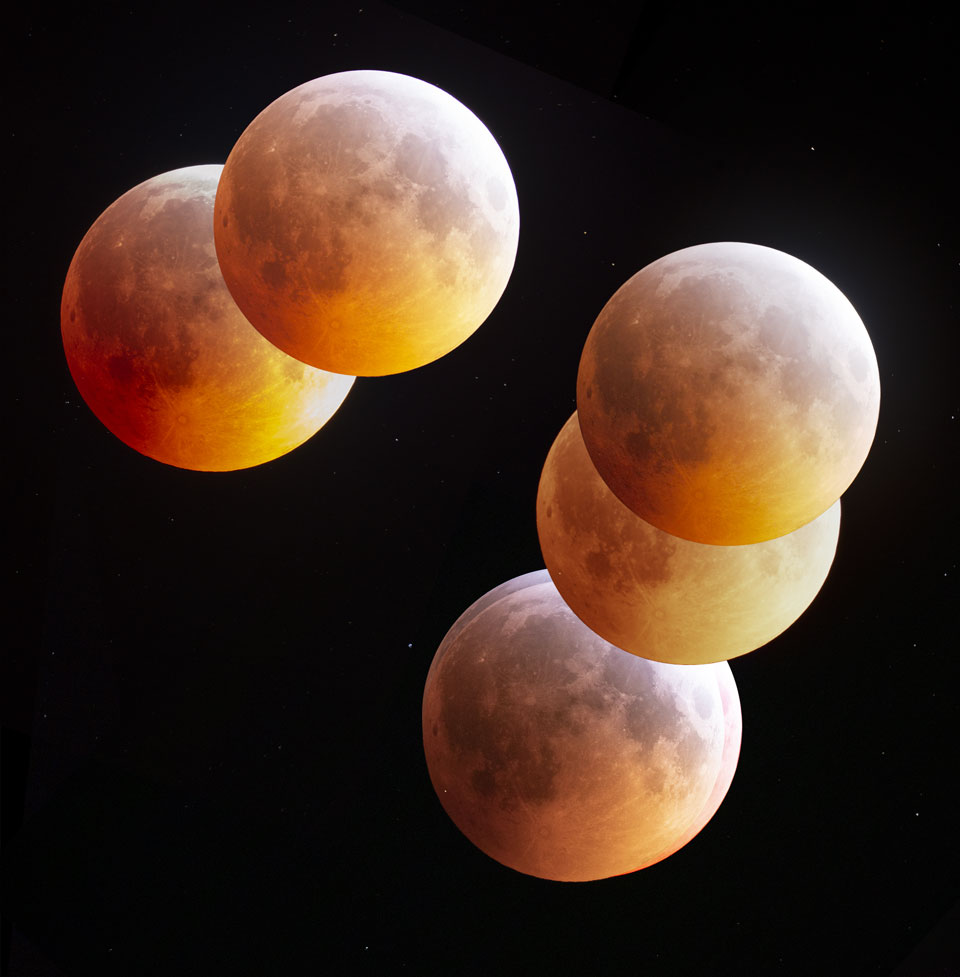2020 February 5
Lunar Eclipse Perspectives
Image Credit: F. Pichardo, G. Hogan, P. Horálek, F. Hemmerich, S. Schraebler, L. Hašpl, R. Eder;
Processing & Copyright : Matipon Tangmatitham; Text: Matipon Tangmatitham (NARIT)
Explanation: Do we all see the same Moon? Yes, but we all see it differently. One difference is the apparent location of the Moon against background stars — an effect known as parallax. We humans use the parallax between our eyes to judge depth. To see lunar parallax, though, we need eyes placed at a much greater separations — hundreds to thousands of kilometers apart. Another difference is that observers around the Earth all see a slightly different face of our spherical Moon — an effect known as libration. The featured image is a composite of many views across the Earth, as submitted to APOD, of the total lunar eclipse of 2019 January 21. These images are projected against the same background stars to illustrate both effects. The accurate superposition of these images was made possible by a serendipitous meteorite impact on the Moon during the lunar eclipse, labeled here L1-21J — guaranteeing that these submitted images were all taken within a split second.
不同视点看月食
影像提供: F. Pichardo , G. Hogan , P. Horálek , F. Hemmerich , S. Schraebler , L. Hašpl , R. Eder ;
影像处理与版权: Matipon Tangmatitham ; 文字 : Matipon Tangmatitham ( NARIT )
说明: 我们看的都是同一轮明月吗?没错,不过我们所见的月亮也都稍有不同。差异之一是在视觉上月亮相对于背景恒星的位置,这种效应称为视差。我们人类就是用二眼之间的视差,来判断物体的远近。不过要察觉月亮的视差,我们得比较更大间距、相隔数百到数千公里远的”眼睛“。另一个差异,则是世界各地所见到的球形月亮表面,都稍有不同,这种效应称为天平动。上面这幅呈现2019年1月21日月全食的组合主题影像,就结合了摄于多个地点,后来投稿到APOD的照片。这些照片全都投影到同一片背景星场,以阐释上述的这二个效应。这些照片之所以能够精准叠加,则受惠于月食期间,有颗陨石恰好撞击在L1-21J的位置,从而保证这些投稿照片取像的时间点,差异都在转瞬之间。








